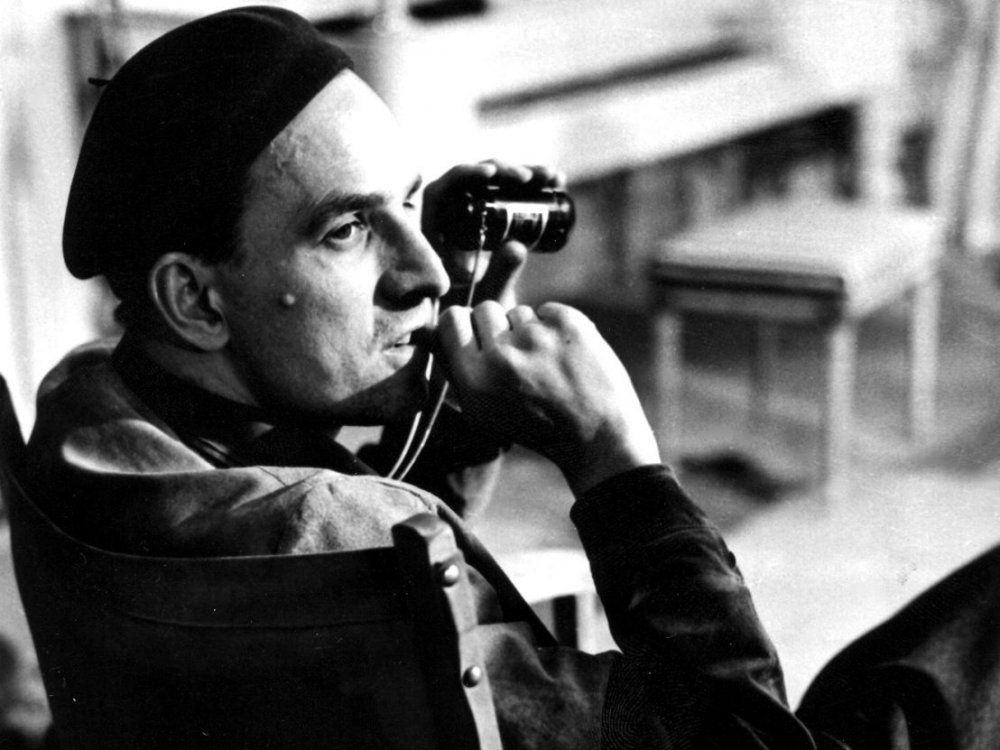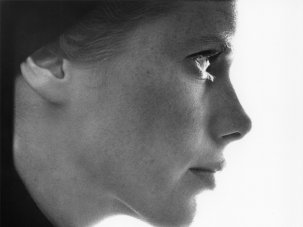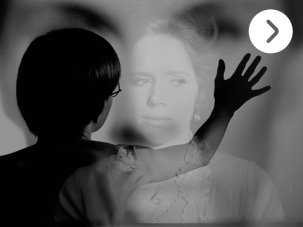There’s a terrific skit by French and Saunders, made some time around the mid-1990s. Shot in black and white, it opens with the sea full of dead bodies and Death waiting on the rocks. There’s a crack in the wallpaper; a “bloody great huge” spider dressed as Christ. Jennifer clutches her head in an apparent crisis of faith; Dawn has fleshly intercourse with the Evil One. “Another one of those Bergman sort of days,” Jennifer sighs. “Never mind. We can pretend to understand it and read a book about it later.”
The Faith Trilogy is screening at BFI Southbank, London, as part of Ingmar Bergman: A Definitive Film Season, which runs until March. A selection of the director’s key films plays at cinemas nationwide.
French and Saunders’s images are torn straight from the pages of Ingmar Bergman’s screenplays for films such as The Seventh Seal (1957), The Virgin Spring (1960) and Through a Glass Darkly (1961), films that have, of late, fallen out of fashion. Indeed today they might be considered so wilfully opaque and mired in symbolism as to be past the point of parody. Bergman’s oeuvre epitomises a type of art cinema that marries philosophical conceits with explicit treatments of sexuality, a type that was very much of its time. In 1958 the journalist Leslie Mallory could write: “No director, British or foreign, has ever been honoured in this country as Bergman has. No director in history has had three of his pictures included in the best ten of the year, as he has! You can get tickets for ‘My Fair Lady’ more easily than for the summer-long season of Bergman’s films now running at the National Film Theatre.” It’s hard to imagine that the current BFI season marking Bergman’s centenary will be outselling Hamilton. Still, it’s possible that contemporary audiences might find a poignancy in Bergman’s idiosyncratic brand of existentialism, and in particular its concern with what to believe in after the death of God.
Matters of faith and doubt have long pervaded film. From Epstein and Dreyer, Bazin and Bresson through Tarkovsky and Kieslowski to von Trier and Scorsese: a line of canonical directors has used cinema to investigate the meaning of life – and culture – in a godless world. None, though, did so quite as zealously as Bergman, a filmmaker who described himself as a “conjurer”: a sophisticated, technologically savvy magician whose raw material is nothing other than our “incredible need to believe”. “When I show a film, I am guilty of deceit,” he wrote in Why I Make Movies, the essay he issued as an introduction to the published screenplay of The Seventh Seal. “I use an apparatus which is constructed to take advantage of a certain weakness, an apparatus with which I can sway my audience in a highly emotional manner – make them laugh, scream with fright, smile, believe in fairy stories, become indignant, feel shocked, charmed, deeply moved.”
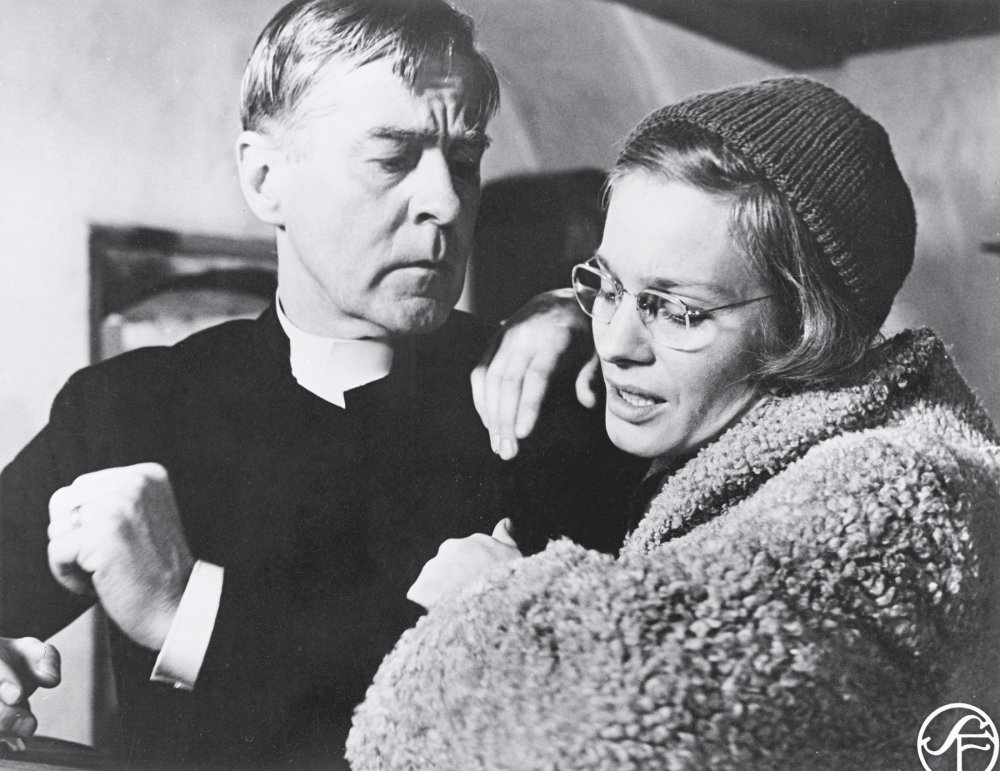
Winter Light (1962)
More than any other filmmaker, it is Bergman who implanted the idea of director as God. In Jane Magnusson and Hynek Pallas’s 2013 documentary Trespassing Bergman, for example, in which a steady stream of great directors makes pilgrimage to Bergman’s home on the island of Farö, Alejandro González Iñárritu exclaims upon entering the hallowed rooms: “If cinema was a religion, this would be Mecca, the Vatican… the centre of it all.”
Bergman’s work is intensely personal, intimate. Yet the director’s distinct sense of humility stands at ironic odds with his reputation as the quintessential auteur. For Bergman, art had to be part of something else – something deeper, grander, more ancient; a larger human project. The artist, meanwhile, must transcend himself, leave his ego at the cinema door. He wrote: “It is my opinion that art lost its basic creative drive the moment it was separated from worship. In former days the artist remained unknown and his work was to the glory of God. He lived and died without being more or less important than other artisans; ‘eternal values’, ‘immortality’ and ‘masterpiece’ were terms not applicable to his case. The ability to create was a gift.” Asked what he wanted the general purpose of his films to be, he replied: “I want to be one of the artists in the cathedral on the great plain…. Regardless of whether I believe or not, whether I am a Christian or not, I would play my part in the collective building of the cathedral.”
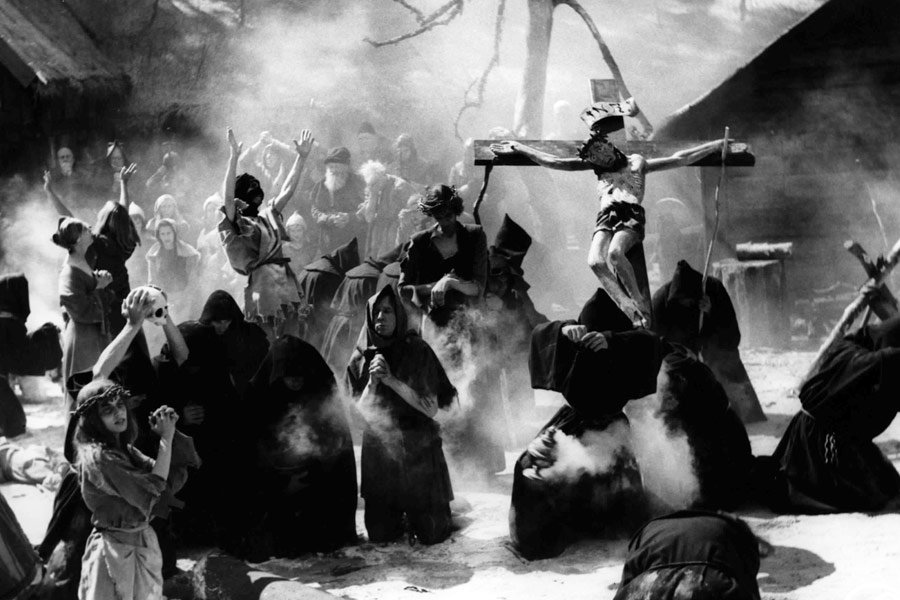
The Seventh Seal (1957)
Although he described himself as an agnostic, religion – or at least its loss – was a longstanding concern of Bergman’s. It became the main focus for his films in the late 1950s and early 1960s. While works such as The Seventh Seal and The Magician (aka The Face, 1958) are critical of institutional religion, they nevertheless float the possibility of spiritual connection. ‘Grace’ isn’t a word that fits easily into Bergman’s vocabulary, but something like it can be found in the moments of human communion dotted throughout these films.
Such glad moments begin to fade in the first pair of films that make up Bergman’s Faith Trilogy, though: Through a Glass Darkly and Winter Light (1962); by the time of the concluding part, The Silence (1963), they have disappeared altogether, replaced by a dystopic vision of humanity abandoned by God. Gradually, it becomes clear these are films not about faith, but about the crisis of faith that haunts modern life.
Bergman described the trajectory of the three films as moving from “certainty achieved” to “certainty unmasked” to “God’s silence – the negative impression”. But any certainty offered by Through a Glass Darkly – the tale of a young schizophrenic woman, Karin, haunted by visions while on holiday with her family on a remote island – is ultimately undermined. The vision of God that Karin – a woman who seduces her own brother – sees creeping out of the cracks in the wallpaper takes the shape of a spider; moments later a helicopter arrives to cart her off to an asylum. In the wake of this nightmare, her feckless father David’s efforts to reassure his long-neglected 17-year-old son Minus that “God is love” ring horribly hollow. And Minus’s damp-eyed declaration, following this discussion, that finally, “Papa talked to me” is a cliché that closes the film on a false note.
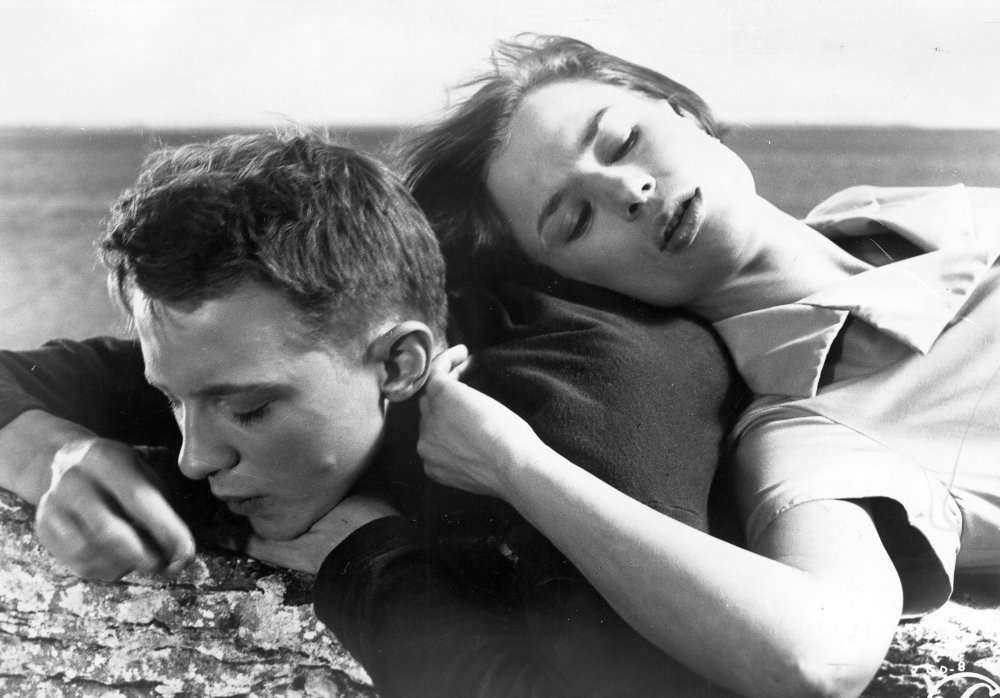
Through a Glass Darkly (1961)
Bergman claimed that doubts about the ending of Through a Glass Darkly caused him to write Winter Light as a ‘sequel’ of sorts, rejecting David’s self-protecting God of love. The film turns around the dwindling faith and shrinking congregation of a pastor, Tomas Ericsson – a character who is a mix of both Bergman and his father, Erik, a Lutheran minister and later chaplain to the King of Sweden; Ericsson is both ‘Eric’ and ‘Eric’s son’ – who reaches crisis point after a communicant, Jonas, reveals that his despair of the world and fear of China’s atom bomb has led him to consider suicide.
Far from offering reassuring platitudes, Tomas confesses that his participation in the Spanish Civil War and the death of his wife have turned his loving God “into a spider God”. Jonas duly kills himself, and Tomas wonders if there is no God at all. As his lover Märta – an atheist, the sanest person in the three films and Tomas’s only real hope at redemptive love – puts it, “God doesn’t speak. God hasn’t ever spoken, because he doesn’t exist. It’s all unreservedly, horribly simple.”
The question of God’s silence permeates Winter Light’s close-ups of the characters’ tortured faces, its long, stark shots of the woodland where Jonas’s body is found and its taut, clipped conversations. At the film’s end, one character suggests to Tomas that far worse than Christ’s physical suffering was the pain he must have endured on realising that his disciples, during the course of his ministry, had “simply not grasped what he meant. Not a word. They abandoned him… And he was left alone.” Worse still is the thought – Christ’s thought on the cross – that God had forsaken him. “Everything he’d been preaching was a lie. The moments before he died, Christ was seized with a great doubt. Surely that must have been his most monstrous suffering of all.”
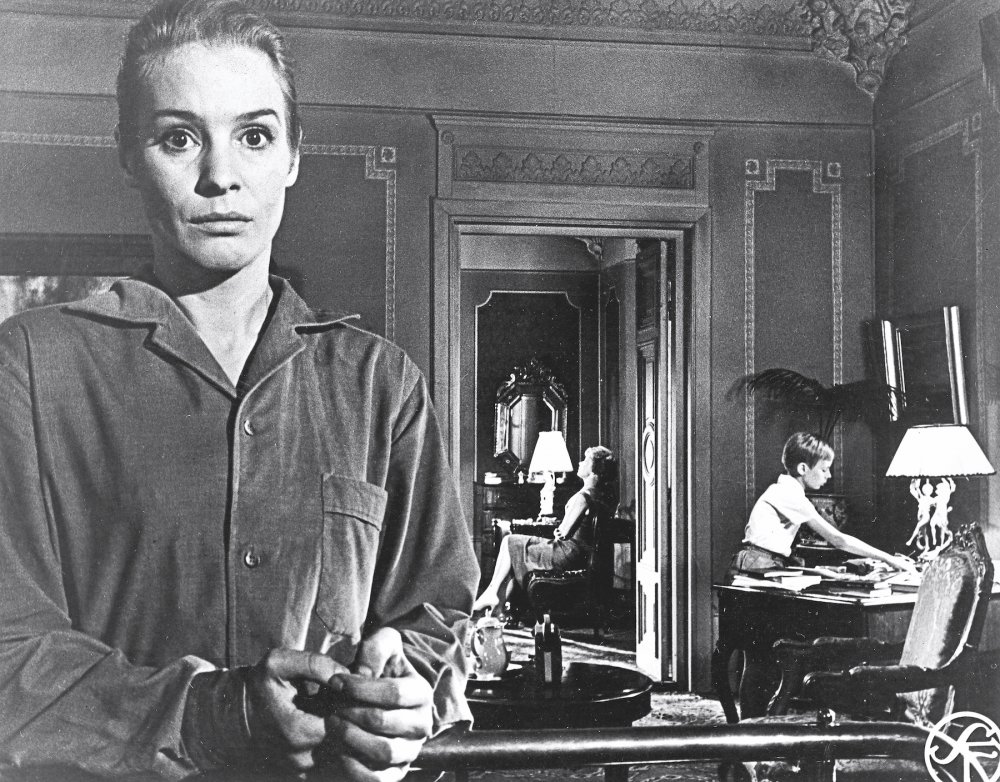
The Silence (1963)
In The Silence Bergman took this monstrosity to its logical extreme, not only avoiding all mention of God but reducing the role of language almost to an irrelevance. Its action takes place in an unidentified city where the citizens speak an unidentified and untranslated language. Here, two sisters – one of whom, Ester, is in the throes of a painful illness – hole up in a sinister hotel, inhabited by weird carnivalesque performers. Anna’s ten-year-old son Johan wanders aimlessly through hotel corridors; his mother has a disaffected sexual encounter. Ester seems to recover, then relapses into agonising convulsions. An army tank makes its ominous way through empty streets. The atmosphere is sickly, static. The clock ticks; nothing moves forward. Not even art offers solace: the film ends abruptly, unresolved. The film is haunted by the metaphysical fallout of the end of Western values. The crisis of language is the mirror of the larger one faced by the modern world. If the other films float the possibility of nihilism, The Silence is nothing short of a gaze into the abyss.
How far removed are such questions of love, of despair, from today’s culture? The god discussed within Bergman’s films is, after all, a Christian one, and as Nick Pinkerton put it in an article in this magazine (Mystical Magery Tour, S&S April 2017), Christianity is still something of a dirty word among liberal elites. Hence perhaps the critical opprobrium surrounding Scorsese’s Silence last year, and the outright contempt for the crowd-pleasing schmaltz of films such as Miracles from Heaven (2016).
Still, religiosity survives, albeit in disguised forms. Filmmakers such as Terrence Malick, Eugène Green and the Dardenne brothers continue to make films shot through with a kind of amorphous spirituality, what Pinkerton calls “new mystic cinema”; while John Michael McDonagh’s Calvary (2013) and Pawel Pawlikowski’s Ida (2014) seem to be direct homages to Bergman. Churches may be empty but religion has found other, subtler outlets. Forms of philanthropy, transhumanism, yoga, clean-eating (“my body is a temple”) and even environmentalism could be considered spiritual experiences. After the hedonistic, capitalist self-interest of the late 20th century, a vocabulary of care, responsibility and love has seeped back into our language. So too has a sense of abandonment. Witness the disoriented millennials of TBS’s TV series Search Party: a brilliant satire about the lengths that a group of young New Yorkers will go to imbue their otherwise banal lives with significance.
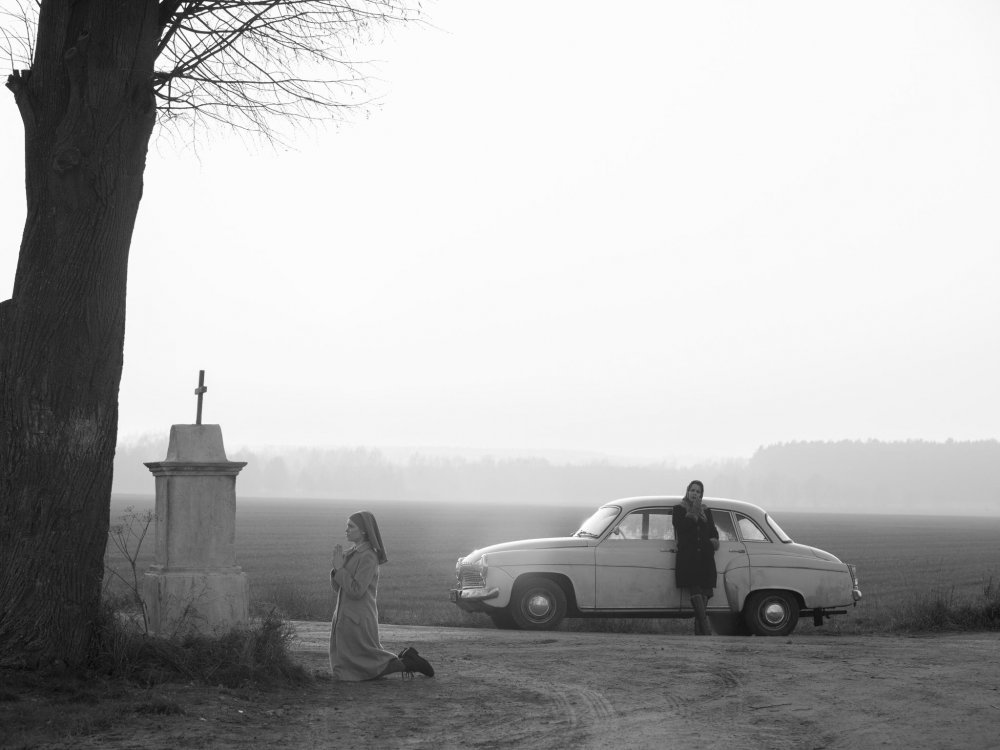
Ida (2013)
It’s possible that such existentialist crises are the privilege of mostly white moneyed classes, as the makers of Search Party suggest. But a quick look at Sight & Sound’s best films of 2017 shows a series of works unconnected by nation, race or subject matter, yet all displaying a deepseated anxiety about our loss of connection with one another, our inability to make sense of the past or present, our abandonment by – and of – any purpose higher than ourselves. With the age of irony withering, could Bergman’s kind of earnestness have a renewed resonance? It’s just possible. Bergman believed that even though God may not exist, our worship of him has cast a long shadow on the history of humankind. Films such as Get Out, Zama, Western, Loveless – as well as the exercise in symbolism that is Twin Peaks: The Return – stand in that shadow, making clear, just as the trilogy does, that an absent god shapes our history quite as effectively as a present one would do.
-
Sight & Sound: the February 2018 issue

Paul Thomas Anderson on Daniel Day Lewis and Phantom Thread; plus Nick Park’s Early Man, Alexander Payne’s Downsizing, Steven Spielberg...
-
The Digital Edition and Archive quick link
Log in here to your digital edition and archive subscription, take a look at the packages on offer and buy a subscription.




